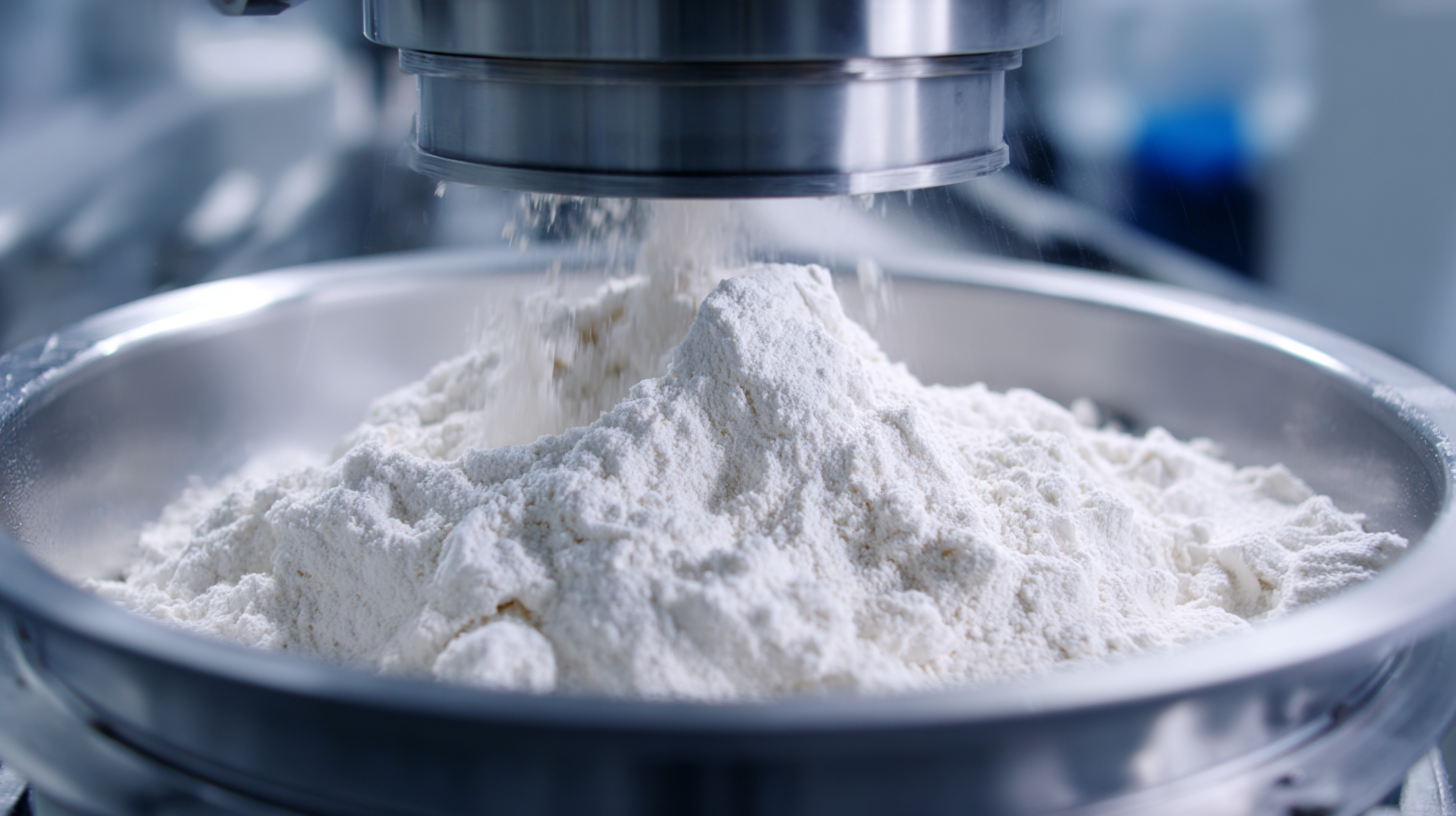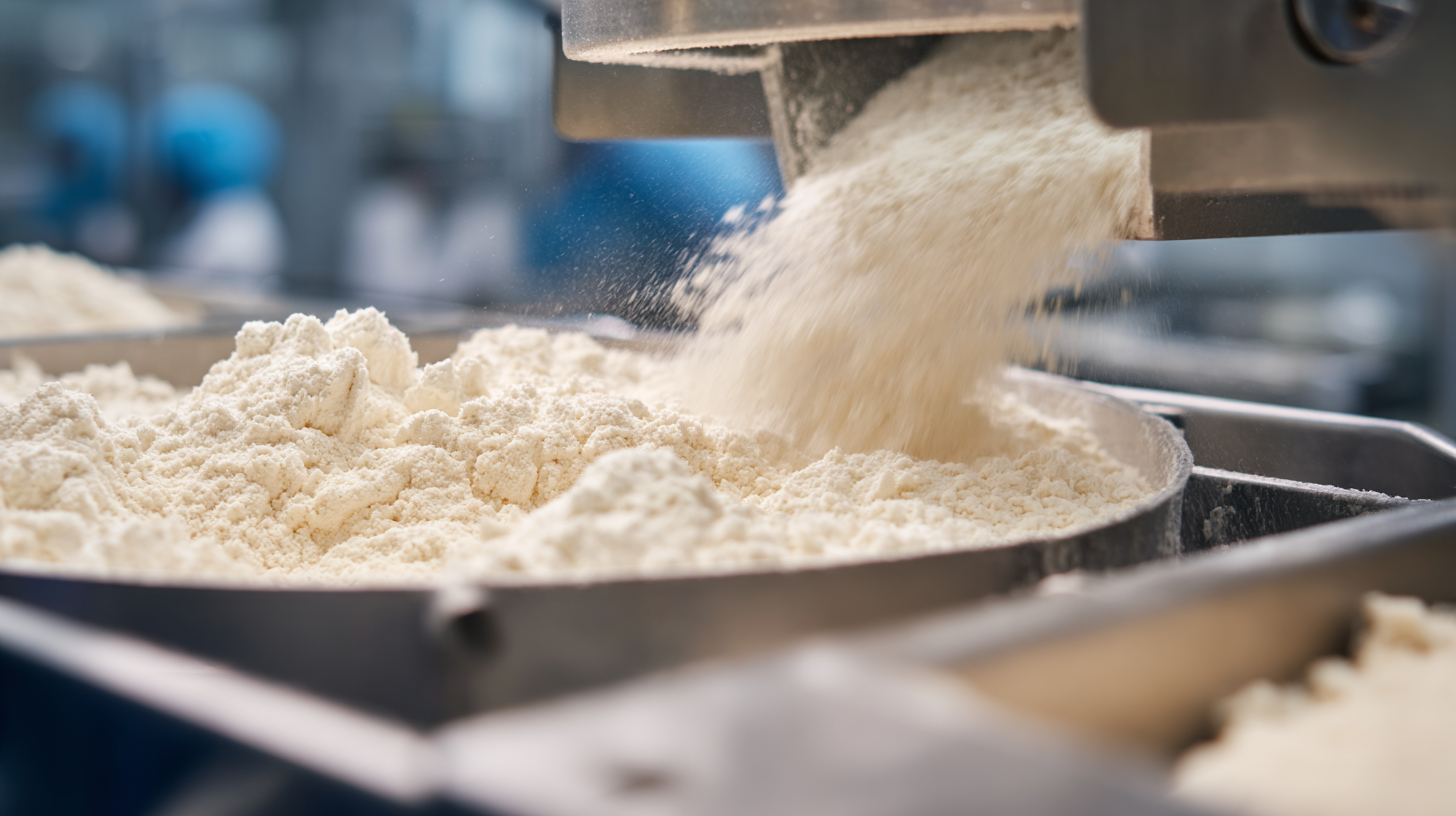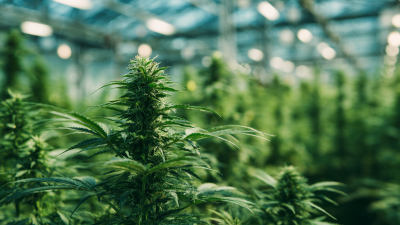
Blog
How to Optimize Your Mixer Powder Blending Process for Maximum Efficiency
In the competitive landscape of manufacturing, optimizing the mixer powder blending process is crucial for achieving maximum efficiency and product quality. According to a report by Grand View Research, the global powder blending equipment market is expected to reach $5.5 billion by 2027, driven by the increasing demand for high-quality blended products across various industries.

An efficient mixer powder blending process not only reduces production costs but also minimizes waste and enhances throughput. As manufacturers strive to meet the rising consumer expectations for consistency and performance, understanding the intricacies of mixer powder technology becomes essential.
This guide will explore effective strategies and best practices to elevate your blending operations, ensuring you remain competitive in an ever-evolving market.
Understanding the Fundamentals of Mixer Powder Blending
Understanding the fundamentals of mixer powder blending is crucial for achieving maximum efficiency in production processes. Effective powder blending requires an in-depth understanding of the physical properties of the materials being mixed, including their particle size, density, and flow characteristics. Recent studies have highlighted how factors such as interfacial energy and mixing energy can significantly impact the quality and performance of the final product. For instance, optimizing the blending process in the manufacturing of solvent-free Li-ion batteries has shown that reduced additive content can enhance efficiency, emphasizing the importance of tailoring blending protocols to specific material requirements.
Moreover, advanced techniques such as the Discrete Element Method (DEM) offer valuable insights related to granular flows and the dynamics within a mixer. Implementing predictive models using AI and machine learning can enable manufacturers to map the characteristics of bulk powders and anticipate blending performance in continuous processes. These innovative approaches not only facilitate the precise control of blending parameters but also ensure consistency and reliability across various applications, from pharmaceutical preparations to specialized inhalation mixtures. In this evolving landscape, understanding the intricacies of mixer powder blending will be vital in driving efficiency and performance in both traditional and emerging markets.

Identifying Common Challenges in Powder Blending Processes
In the realm of powder blending, efficiency is paramount, yet numerous challenges can impede the optimization process. Common issues include segregation, uneven distribution, and the effects of particle size on blending quality. According to a report by The Freedonia Group, the global demand for powdered materials in industrial applications is projected to reach $65 billion by 2025, underscoring the critical need for efficient blending processes to meet market demands without compromising quality.
Another significant challenge is equipment maintenance and the proper calibration of mixers. A study published in the International Journal of Powder Metallurgy found that inadequate maintenance can lead to a 20% loss in productivity. Additionally, different types of mixers have varying capabilities in handling different powder characteristics, which affects blending homogeneity. This variability highlights the importance of selecting the appropriate equipment and maintaining it regularly to minimize operational downtime and enhance overall efficiency. Addressing these challenges through continuous improvement initiatives can lead to substantial gains in productivity and product quality, ultimately benefiting the entire supply chain.
Choosing the Right Blender Technology for Your Needs
When optimizing your mixer powder blending process, selecting the right blender technology is crucial to achieving maximum efficiency. The type of blender you choose can significantly impact the consistency and quality of the blended product. For lighter powders, a ribbon blender might be suitable as it provides good mixing and is often cost-effective. However, for finer materials or those that require a gentle touch, consider a conical mixer or a twin-screw blender to avoid clumping and ensure uniform distribution.
Tip: Always assess the specific characteristics of the powders you are blending. Factors such as particle size, density, and moisture content play a pivotal role in determining the most appropriate technology. Conducting small-scale trials can help you identify which blender performs best for your particular materials.
Also, think about the scalability of your chosen technology. If your production needs may grow in the future, investing in a blender that offers modular features or easy upgrade options can save you time and resources down the line.
Tip: Engage with equipment suppliers to gather insights on trends and technologies that can enhance your blending process, allowing you to make an informed decision tailored to your operational needs.
How to Optimize Your Mixer Powder Blending Process for Maximum Efficiency
| Blender Type | Mixing Capacity (kg) | Mixing Time (minutes) | Power Consumption (kW) | Efficiency (%) |
|---|---|---|---|---|
| Ribbon Blender | 500 | 20 | 15 | 90 |
| V-Blender | 300 | 15 | 10 | 85 |
| Conical Blender | 400 | 25 | 12 | 88 |
| Tumble Blender | 600 | 30 | 18 | 80 |
| Planetary Mixer | 100 | 10 | 5 | 92 |
Implementing Effective Mixing Techniques for Optimal Results
Optimizing your mixer powder blending process is essential for achieving the best results while minimizing energy consumption. One effective method is the application of advanced mixing techniques using state-of-the-art designs of blade mixer impellers. By employing discrete element methods (DEM) and topology optimization, manufacturers can create impellers that not only enhance the mixing efficiency but also significantly reduce energy usage. This is particularly important in today’s industrial landscape, where the integration of renewable energy sources into microgrids poses new challenges in terms of power management.
Furthermore, monitoring and assessing the quality of the mixing process can lead to optimal outcomes. Recent advancements have introduced methods for evaluating solid-liquid mixing quality through image analysis, enabling more precise control over the blending process. By implementing these innovative techniques, businesses can ensure uniformity in their products and optimize resource usage. These steps ultimately contribute to a highly efficient mixing operation, reflecting a broader trend towards sustainability and productivity in industrial processes.
Optimizing Mixer Powder Blending Process Efficiency
Monitoring and Measuring Efficiency in Blending Operations
In the quest for optimizing mixer powder blending processes, monitoring and measurement play crucial roles in enhancing operational efficiency. A recent industry report by the International Society for Pharmaceutical Engineering (ISPE) highlights that blending efficiency can significantly impact product quality and consistency. Data indicates that a mere 5% improvement in blending uniformity can reduce waste and save companies approximately 10% in raw material costs annually. This underscores the importance of precise measurement tools to assess and adjust blending parameters in real-time.
Moreover, the integration of advanced technologies such as in-line measurement and data analytics has transformed the landscape of blending operations. According to a study published in the Journal of Food Engineering, utilizing continuous monitoring systems can increase blending efficiency by up to 20%. By tracking key metrics such as moisture content and particle size distribution, organizations can quickly identify and rectify deviations, ensuring a consistent end product. In a sector where margins are often thin, investing in measurement and monitoring technologies not only enhances productivity but also fortifies compliance with stringent regulations.

Related Posts
-

5 Unmatched Mixer Powder Applications Transforming Your Production Process
-

What is a Mixer Powder and How Can It Transform Your Production Process?
-

Exploring Characteristics and Applications of Best Blister Machines in Pharma Manufacturing
-

Ultimate Guide to Choosing the Best Powder Pulverizer for Your Industrial Needs
-

Top Innovations in Best Powder Mixture Machines: Real-World Applications and Success Stories
-

How to Maximize Efficiency with Cbd Monobloc Solutions



